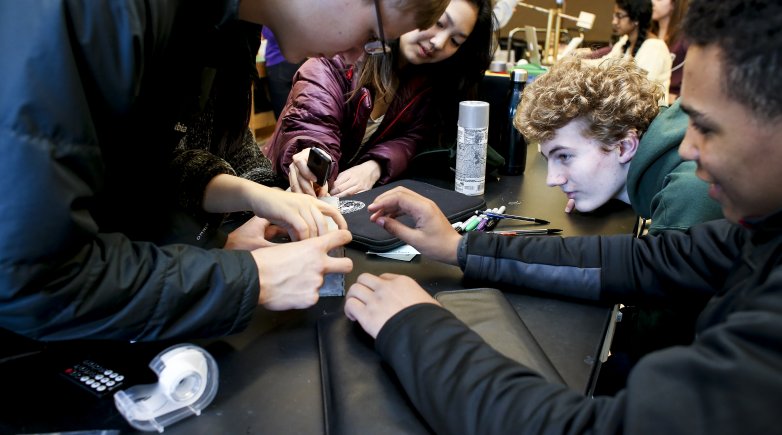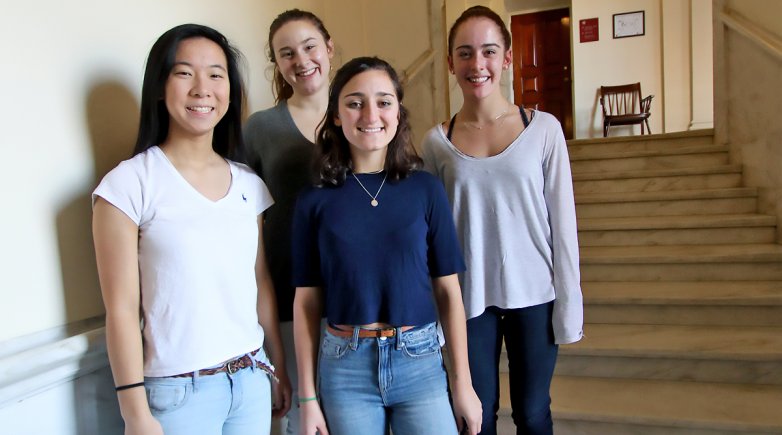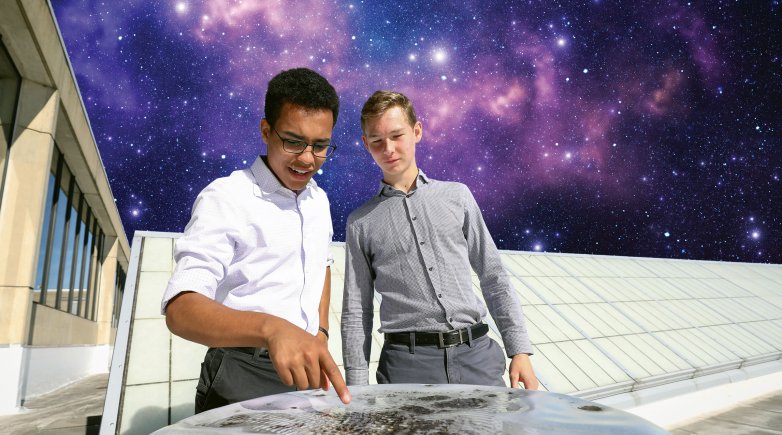Students solve real-world problems at 48-hour Maker Fest
Students use design thinking principles to create real-world products in a two-day maker event.
Learning to make, to experiment hands-on, to fail and recover — it’s all part of the growing maker culture at Exeter that is expanding the traditional Harkness classroom model of collaborative learning to new venues and rewards.
“Kids want to have tactile experiences,” says History Instructor Meg Foley who is co-teaching a new course called Design Thinking, along with Science Instructor David Gulick. In connection with the launch of that course, Exeter hosted its first Maker Fest — open to all students, and required for the students enrolled in Design Thinking.
Working with Rajesh Nair, MIT researcher and founder of ENCube Labs, which trains innovation skills through real-world problem solving, the PEA faculty welcomed 40 Exonians, from preps to seniors, to Phelps Science Center for a weekend of innovation and invention.
Learning how to build
Maker Fest started Friday night with an intensive training session where students created small projects using 3-D printers, Arduino boards (for quickly creating circuitry), a laser cutter and other essential tools.
Early Saturday afternoon, the students came back together and arranged themselves into teams of four and five for an exercise in ideating (an updated form of brainstorming that involves both sides of the brain and is conducive to bigger, better idea generation).
Nair asked the groups: “How would you keep homeless kids in school?” After the first round of responses, which resulted in what Foley calls “very similar and reasonable sounding things,” Nair challenged students to think outside of their own experience and come up with three new solutions: one that would cost more than $1 million, one that would “get you into trouble” and a third that incorporates magic or fantasy.
Though brief, this ideation exercise showed students how to “think bigger than the immediate possibilities,” says Foley. “They learned to redefine the problem.”



